| 1 | Fossilised slither imprint |

While fossilised snakes are plentiful and date back 150 million years, a fossilised slither imprint had never been reported until 2023. Mammoth hooves and woolly rhino prints are common in Europe, yet snakes distribute their weight over too great an area to make a strong imprint.
In 2023, scientists in the southern Cape region of South Africa found a long, indented marking, in a rock layer dating back 93,000-83,000 years. It dated back to the Pleistocene epoch, the height of the ice age, when South Africa was cooler than today. The marking was determined to be made by a puff adder, an extremely common venomous species in the Cape region today, with a deadly cytotoxic venom. It was found in the Walker Bay Nature Reserve, roughly 100km from Cape Town.
What’s more, there was a second marking. An extinct species, the long-horned buffalo, had walked over this sediment not along after the puff adder. They knew this because the puff adder’s trail was deformed by the footprint. The slab measured 3 by 2.6 metres, and had plummeted from a cliff onto a beach below. The scientists got lucky, as slabs below were often covered with algae or sand, but this one was fortunately bare.
| 2 | A prey inside snake prey |
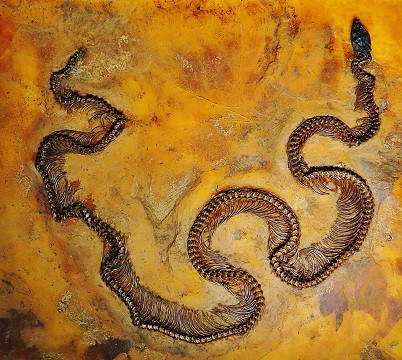
The Messel pit in east Germany is one of Earth’s great fossil troves. It was originally scheduled to be transformed into a landfill in the 1970s, until it was made a Unesco World Heritage site. Every year brings new discoveries, and one from 2009 was an extra rarity: an insect trapped inside a lizard trapped inside a snake. It was an ultimate display of the prehistoric food chain, and the three had been buried in deep mud sediment for an estimated 48 million years.
The snake was Eoconstrictor fischeri, one of the best known prehistoric serpents, with many fossils previously unearthed from the Messel pit. This species is theorised to have been an early adopter of heat-seeking infrared pits, which are found in most modern boas and pythons. At 103cm, this was theorised to be a juvenile, as most E. fischeri adult skeletons have measured 2 metres. The lizard measured 20cm and was a Geiseltaliellus maarius , a previously discovered prehistoric species.
This insect-lizard-snake combo is known as a tripartite fossil food chain. These are extremely rare in nature – one of the few others discovered involved a prehistoric shark from 280 million years ago.
| 3 | Colour reconstruction |
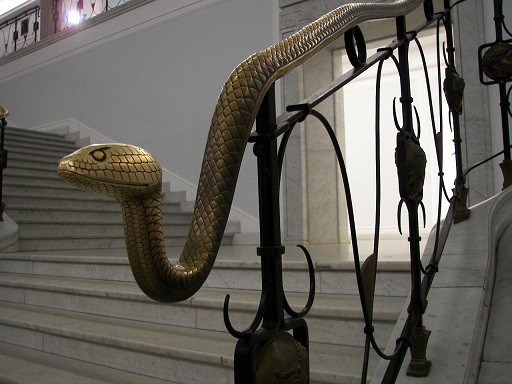
2016 saw an advancement in snake palaeontology when researchers claimed to have identified the exact colours of a prehistoric snake. This fossil was discovered back in the early 1900s, in northeast Spain, and lived 10 million years ago in the late Miocene era.
Black is an easy colour to identify in prehistoric fossils, as melanin takes years to degrade into nothingness – hence how palaeontologists identified black colours in feathered dinosaurs. However, other colours are much harder. Snake pigments partly consist of crystals called chromatophores, which disintegrate over time. Some fossils, however, are formed in a way that preserves the size and shape of the chromatophore cells. Using microscopes capable of analysing down nanometre proportions, the team found subtle remnants of pigment crystals. Samples were taken from the belly, back and side. Each location had different proportions of pigments, presumably corresponding to different colours.
Using a database of living snakes showing how pigments manifest in visible colours today, this allowed them to map out how the snake would look if alive, and not subject to 10 million years worth of degradation. The verdict: the snake was patterned with a mixture of green and brown-black, with a creamier belly. This even gave hints about the snake’s behaviour, as the alternating colours of its body seemed like a pattern strongly inclined towards camouflage.
| 4 | The Tennessee pit snake |
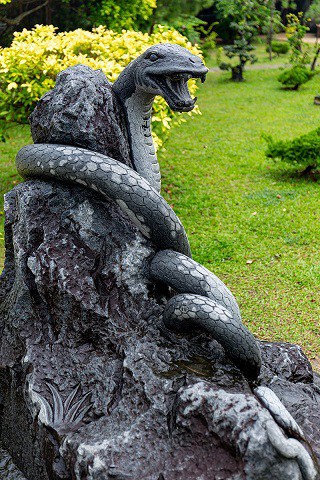
The Gray Fossil Site in Tennessee is one of the richest archaeological sites in the USA. It’s a large sinkhole which was once surrounded by forest, and contains layers of fossils dated to between 2.58 and 23 million years ago. In 2017, a new discovery was a supposed “winged” serpent measuring 30-45cm. Zilantophis schuberti was dated to 5 million years ago, and theorised to be a humble leaf litter snake, staying out of sight, rummaging around and feeding on insects.
Snakes have no limbs, but a high amount of vertebrae. Analysing the shape of individual vertebrae is the most effective way to identify species, and this snake had a shape unlike any known species, alive or extinct. There were odd, wing-shaped projections on each side of a vertebra, which were theorised to be attachments for back muscles.
This led to the name of Zilantophis schuberti, referencing Zilant, a winged serpent character in Tatar mythology. Despite its tiny size of 30cm, its cloest living relatives were likely the Pantherophis ratsnake family, such as the corn snake and black ratsnake, which reach over 1 metre.
| 5 | The mother of all snakes |
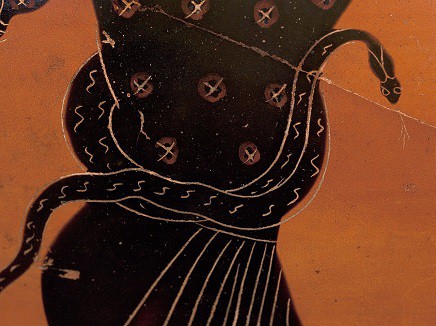
The squamates are a large section of the reptile family, which includes all living snakes and all living lizards. In 2022, scientists dug up a fossil in Scotland which dated back to 240 million years old, in the early Triassic period. It was a tiny reptile measuring just 6cm, and was dubbed Ballairsia gracilis. Scientists estimated this fossil to be the common ancestor of all 10,000 living squamate species, including all surviving 3900+ snakes, and all snakes ever to exist.
The fossil was dug up on the Isle of Skye in Scotland, located on the howlingly windy west coast. Researcher Elsa Panciroli noticed just the black skull poking out of a layer of limestone rock. Despite its miniature size, she instantly had an inkling as to what she was staring at. The skeleton dated back 240 million years, yet was nearly entirely complete, making it one of the most complete ancient reptiles ever discovered. The only missing sections were its snout and tail.
Most importantly, this skeleton was already developing the signature feature of snakes: cranial kinesis. This is a flexible skull, especially the jaw, which unhinges vastly in snakes to swallow prey whole. Modern lizards possess moderate cranial kinesis, but snakes are on a whole other level. Other groups of reptiles, such as the ancestors of crocodiles and turtles, and of course dinosaurs, split off well before this ancestor snake species.
| 6 | Najash the half formed snake |
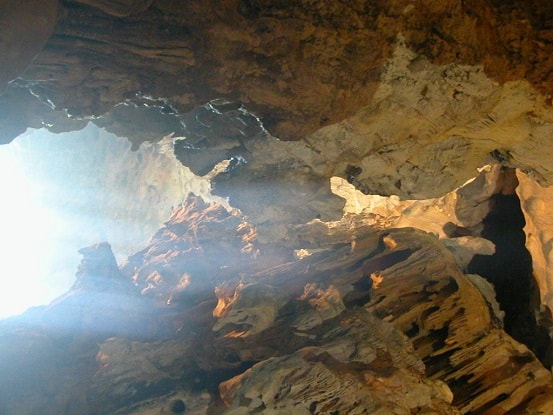
2019 saw new snake fossils discovered of a species called Najash, which gave scientists an even clearer vision of snake evolution. Najash had the most complete, immaculately preserved skull of any prehistoric snake. Najash lived 90 million years ago, and the fossils revealed a halfway house between lizards and modern snakes. It had some, but not all of the flexible joints found in modern snake skulls. Unlike modern species, its cheekbones were still relatively developed, and its middle ear was between that of a modern snake and lizard.
Najash was originally discovered in 2003, making it a rare ancient snake to have multiple fossils discovered, hinting that it was relatively common. 8 new skulls were discovered in 2019, in a relatively uncrushed state, dug up from the La Buitrera Palaeontological Area in Argentina. Najash was found to still possess rudimentary hind legs, less effective than a lizard, but possibly enough to be involved with movement.
Likewise, Najash still possessed a pelvic girdle, which is found in no living snake. This led media outlets to dub it the “snake with hips”. Najash is believed to have been a distant offshoot of the snake family tree, well separated from all living snakes. It’s likely that it was primitive in its own time, coexisting with more modern, advanced snakes.
| 7 | The reason cobras spit |

The likes of black-necked spitting cobras not only have a cytotoxic bite, rotting flesh, but can spit in human eyes from 2.5 metres away with deadly accuracy. A 2021 study found that spitting evolved not once in cobras, but on three separate occasions. Most disturbingly, the scientists found that on each continent, the first evidence of spitting corresponded closely with the emergence of primates in the fossil record. This was approximately 7-10 million years ago.
Humans and chimpanzees diverged an estimated 10 million years ago, and the new proto versions of each species would be the first victims. Many primates attack snakes with stones and sticks. An ape-like creature walking on two feet would have had added freedoms, poking a serpent from afar, pressurising the primitive cobra into evolving a long-range venom. Poking a cobra with a stick would now be a much riskier proposition – a globule of blinding venom in the eye which could incapacitate the victim for days. In other words, our ancestors forced cobras to become twice as terrifying.
Some have spread this theory as “humans caused cobras to spit”, but not quite – it was likely primitive ape families prior to humans such as Sahelanthropus or Australopithecus.
| 8 | Snakes evolved from the sea? |

Yet another halfway house fossil was discovered in 2015, and named Tetrapodophis amplectus. It was dated to 120 million years ago, and still possessed 4 legs, yet was the most snake-like body discovered with four limbs to date. Its body was extremely elongated, with 272 vertebrae, 160 in the main body rather than the tail. Previously, scientists believed that such a long spinal column would be unable to support limbs. The legs and arms were already shrunken, and rather than movement, scientists believed they were for grabbing mates. This inspired the name, which translates loosely to “four-legged hugging snake”.
Initially, Tetrapodophis amplectus was believed to be a burrower. But a new analysis of the fossil in 2016 changed everything. Skeletal analysis revealed that the combination of a long tail and overly delicate feet would make it a highly inefficient burrower. Instead, it was almost certainly a sea snake, as evidenced by a flipper-like shape of the limbs and cartilage in its skeleton.
Better yet, it changed the entire course of snake thinking, that snakes entered the sea, continued to evolve, and only then recolonised land to create the legions of modern snakes. At 120 million years old, it’s unknown exactly when they recolonised the land, and this remains just a hypothesis.
| 9 | Europe once had a cobra |
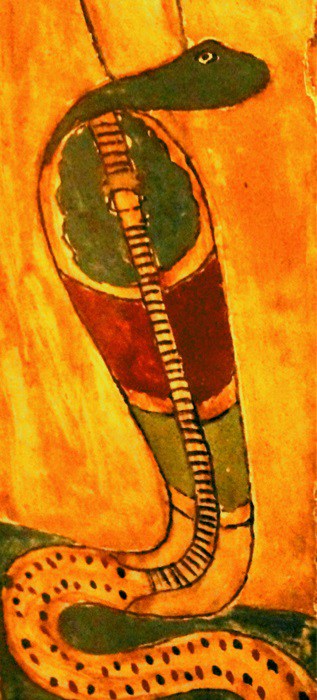
Naja romani is an extinct species, whose fossils have been found at several sites across Europe. These include locations as far apart as France, Ukraine, Austria and Greece. While the only venomous snakes in Europe today are the Vipera true viper family (adders, meadow vipers), it was once home to a cobra, just as Africa and Asia are terrorised by them. Naja romani, AKA the European cobra, is estimated to have exceeded 2 metres, with the original fossil measuring 1.8 metres. The latest fossils were found in southern Russia, in the warm Black Sea areas, which may have been their last refuge during a cooling climate. Exactly when they went extinct is a mystery, but fossils have been found from the Late Miocene period (11.63 to 5.333MYA).
One relic of the European cobra survives to this day. The common grass snake, a completely harmless species, has an occasional tendency to rear up and spread a small neck hood, just like a cobra. While not as large, this flaring is clearly intended to convince predators that they’re deadly venomous (when they’re harmless) and convince them to back off. Mimicking only happens when the deceiver is aware of the venomous species, so it’s likely that the grass snake’s immediate ancestor, Natrix longivertebrata, was mimicking the long extinct cobra.
This is a relatively rare strategy, as grass snakes prefer to ball up or release a foul snake smell. This hints that with cobras long extinct, they’re now beginning to shed the behaviour. However, it’s still thought to be useful against migrating birds from Africa.
| 10 | The largest viper ever |
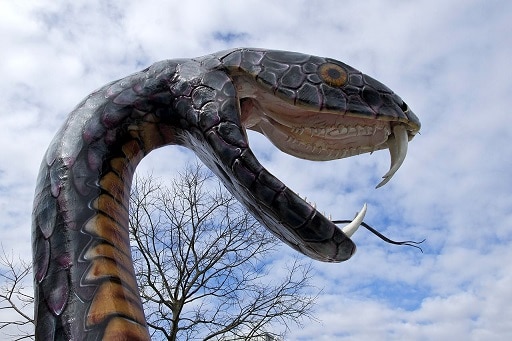
The sheep and goats of Europe may have breathed a sigh of relief when European cobras died out 5 million years ago. But there was potentially an even greater threat still roaming the grasslands: Laophis crotaloides, the largest fossilised viper yet known. 13 fossilised vertebrae of this species were discovered in Thessaloniki, northern Greece, in 1857. They were dated to 4 million years ago, and the vertebrae’s shape placed them clearly in the viper family. Extrapolation produced an estimated length of 3-4 metres, and with a typically thick viper body, an estimated weight of 57 pounds. This is larger than any current viper living on Earth, let alone Europe, with the South American bushmaster topping the table at 3.5 metres.
Then something unfortunate happened: the fossils were lost. This was followed by 155 years of mystery. Laophis crotaloides became an enigmatic figure in snake circles, which was continually debated, ignored, re-debated, until the lack of fossils proved an insurmountable barrier.
Finally, a study in 2014 announced the discovery of new vertebrae, again found near Thessaloniki. It measured under an inch, yet matched the characteristics of the original, reconfirming a viper whose existence people had begun to doubt. Laophis crotaloides is doubly mysterious in that it appeared when Europe was beginning to cool, and transform into temperate grasslands. The majority of huge snakes (Anacondas, bushmasters) live in tropical climates today.
Fun fact: Laophis crotaloides was discovered by Sir Richard Owen, the man who invented the word “dinosaur”.
